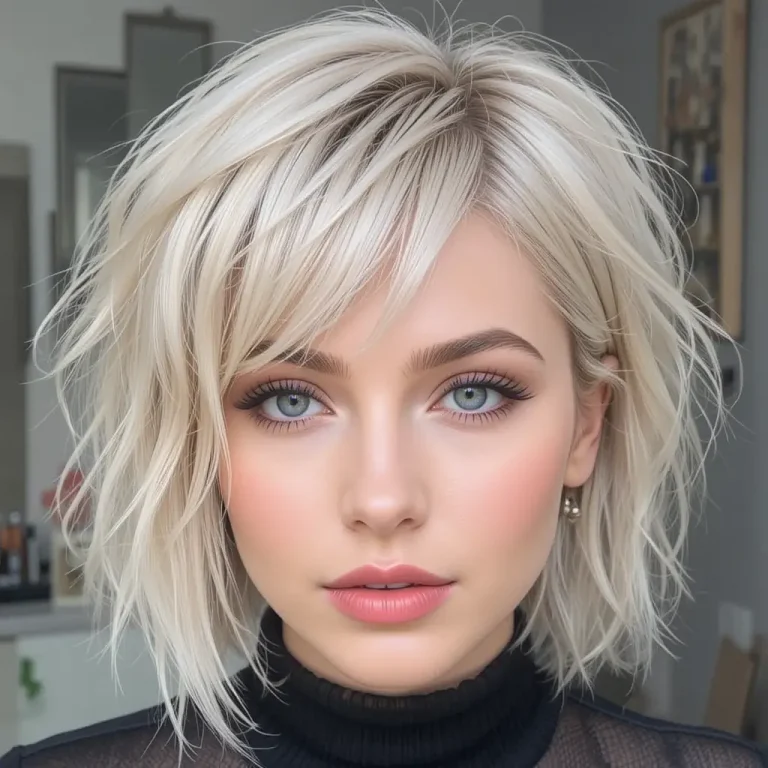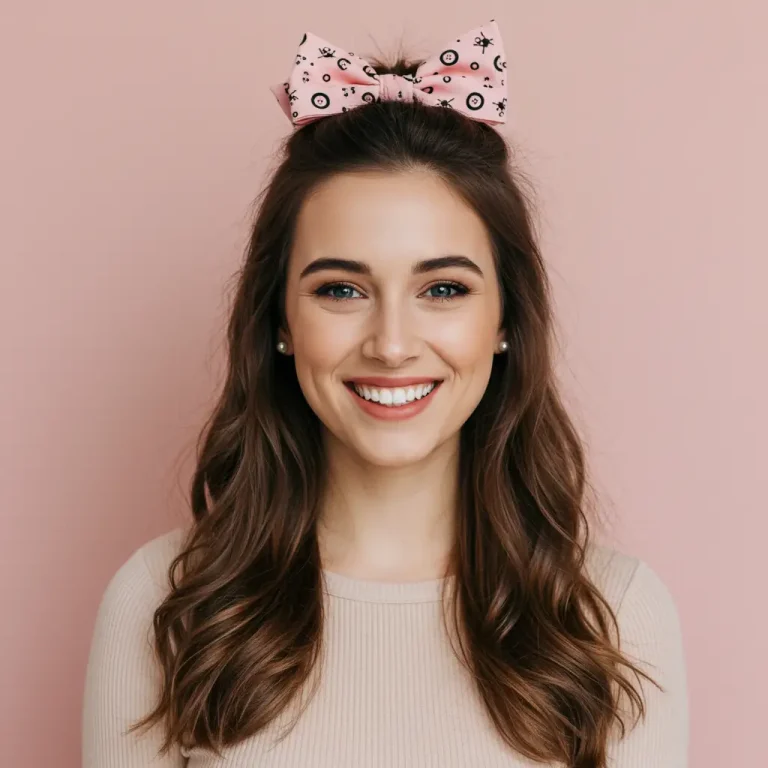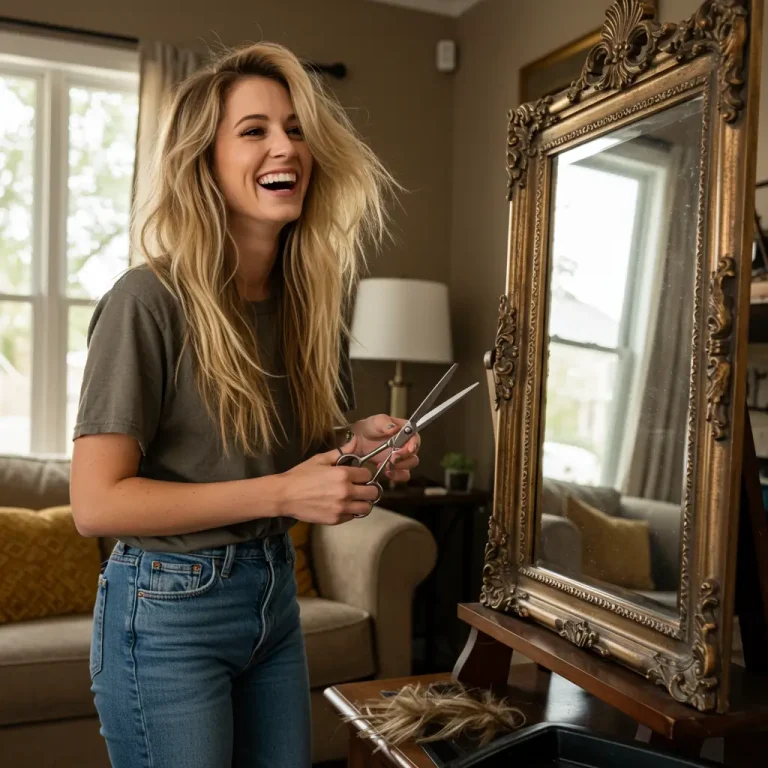How To Draw Black Hairstyles?
So, you want to draw Black hairstyles and actually make them look right? First off yes, yes, YES! You’re on the right track. Whether you’re a digital artist, a comic book creator, or just someone doodling for fun, mastering how to draw Black hairstyles is a game-changer.
But let’s be real for a sec Black hair isn’t just hair. It’s culture, identity, history, and serious art. If you’ve ever tried sketching a decent afro and ended up with what looked like a burnt broccoli floret (been there ), this guide’s for you.
Understand the Diversity of Black Hairstyles (Because It’s Not Just Afros)
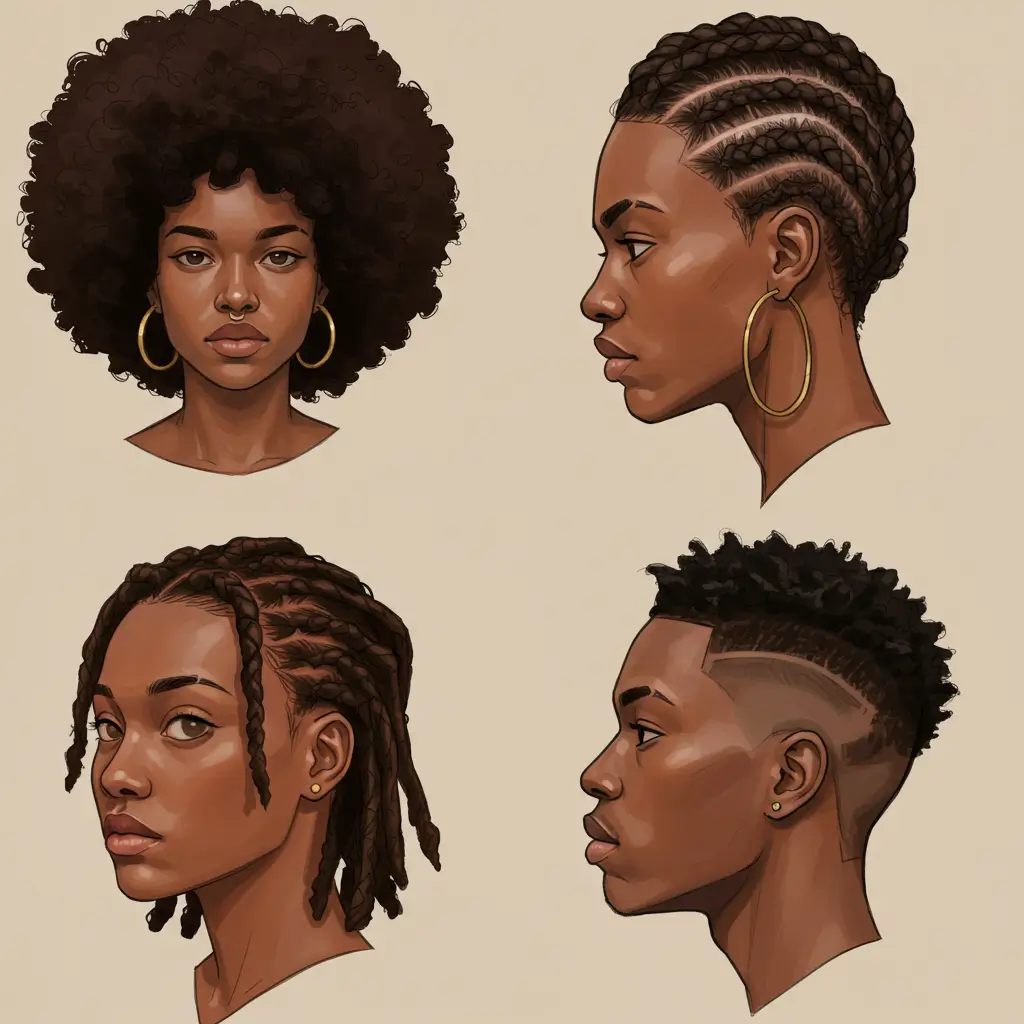
Black hairstyles are beautifully diverse, and drawing them right means understanding what makes them unique. You can’t just slap on squiggly lines and call it a day. Whether you’re sketching hairstyles for African women or playful kids hairstyles for afro hair, texture and structure matter deeply.
Here are some major styles you should know:
- Afros: Big, bold, and fluffy. Volume is key.
- Braids (Box, Cornrows, etc.): These need clean patterns and tight sections.
- Twists & Locs: Texture-focused with defined rope-like or spiral shapes.
- Bantu Knots: Circular buns, often in patterns across the scalp.
- Fades + Lineups: Especially for men sharp lines and fade blending.
- Wigs & Weaves: Often ultra-styled with curls, waves, or sleek finishes.
Bold takeaway: There’s no one-size-fits-all. Each style has its own texture, movement, and vibe.
Tools & Mediums That Make Life Easier (Or At Least Less Hair-Pulling )
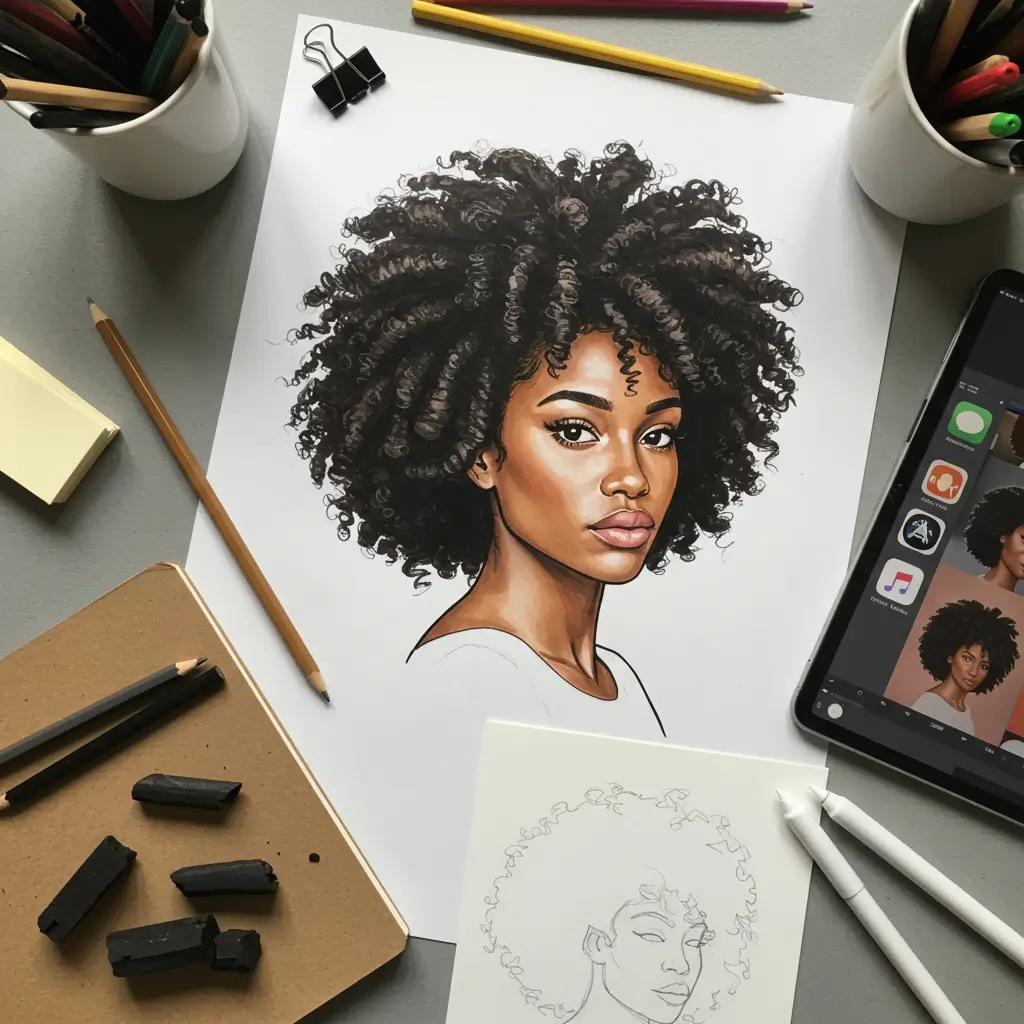
You don’t need fancy stuff, but a few tools make a huge difference when drawing textured hair:
- Digital Artists: Procreate, Clip Studio Paint, or Photoshop with custom hair brushes (texture brushes = lifesavers).
- Traditional Artists: Mechanical pencils for detail, charcoal for fluff and depth, and soft-tip pens for bold lines.
Pro tip: Use textured brushes for curls and kinks. Trying to draw every coil manually? That way lies madness.
Drawing Afro Textures Without Going Full Hedgehog
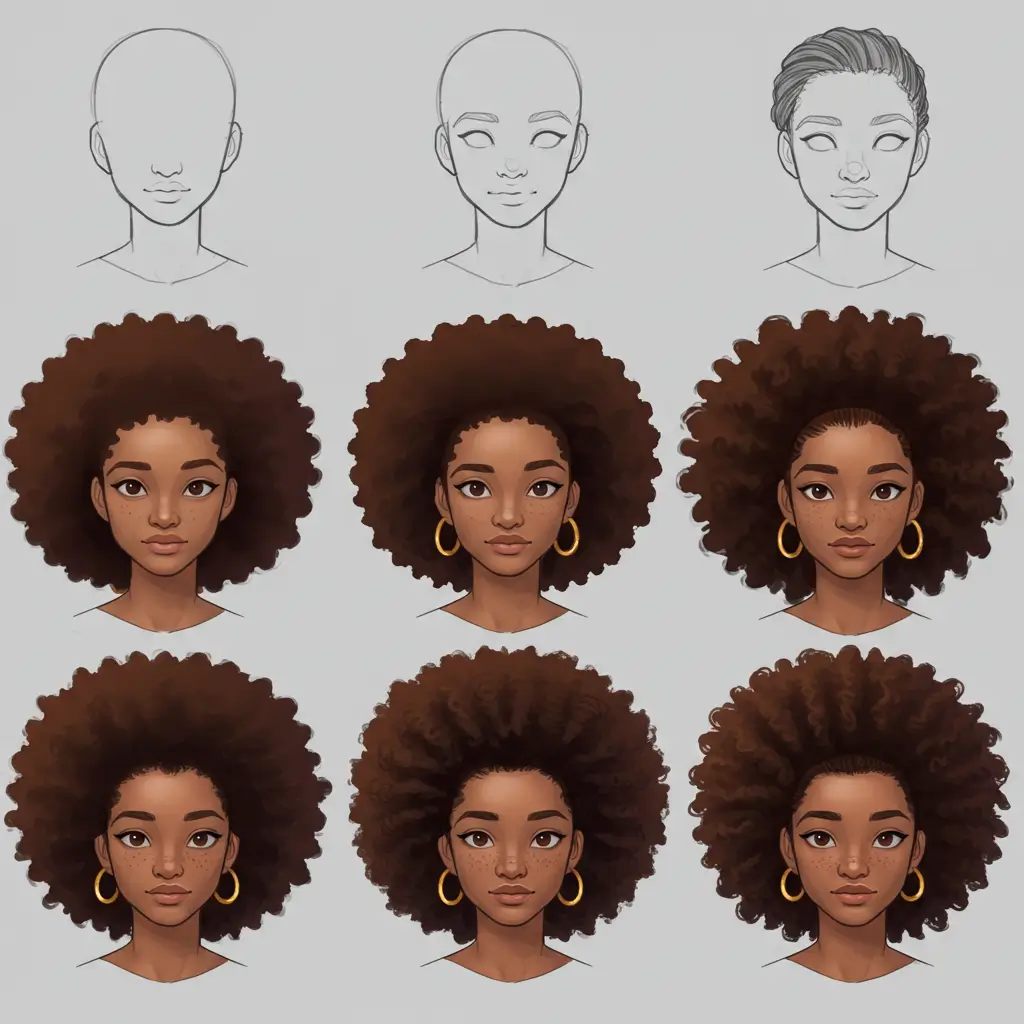
So how do you draw an afro that doesn’t look like you gave up halfway through?
Start with these steps:
- Outline the shape of the hair first. Think volume, not just width.
- Use light scribbles or spiral shapes to define the curl pattern.
- Layer your shading to build texture darker toward the scalp, lighter toward the edges.
- Add some loose curls at the outline to make it look natural.
Important: Avoid drawing it like a perfect circle. Real afros aren’t helmets.
Getting Braids & Cornrows Right (Because the Details Matter)

Ever seen a drawing where the “braids” look like ramen noodles? Yeah, don’t do that.
Here’s how to make them look legit:
- Section the scalp first. Use guidelines to plan braid directions.
- For box braids, draw long, three-part twists with consistent width.
- Cornrows follow the scalp—tight, curved patterns that hug the head.
- Add flyaways or loose baby hairs for that extra realism.
Bold reminder: Consistency is king. If one braid is the thickness of a shoelace and another looks like a rope, we’ve got a problem.
The Art of Locs & Twists (AKA Don’t Just Draw Spaghetti Strings)
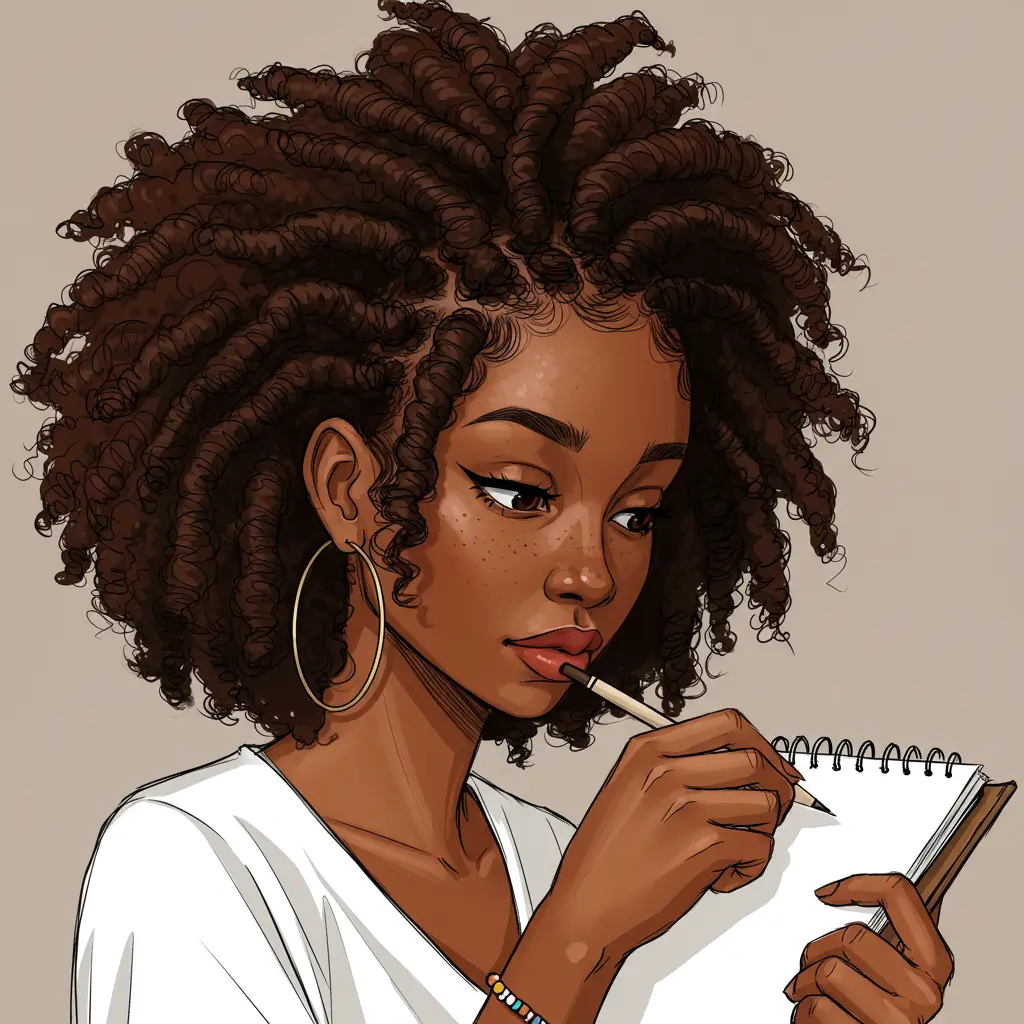
Locs aren’t just messy ropes. They’re intentionally styled, twisted, and often palm-rolled to perfection. Many medium-length hairstyles for Black women feature locs and twists with defined structure and natural movement so your drawings should reflect that same intentional design.
To nail the look:
- Sketch the base section (usually square or diamond parts).
- Draw slightly uneven rope-like twists with gentle curves.
- Add texture lines and frizz, especially near the tips.
- Keep the width consistent but organic—not all locs are factory-made.
IMO, adding a little frizz or softness around the edges makes your locs look chef’s kiss good.
Styling Black Hair With Accessories (Because Hair = Fashion)
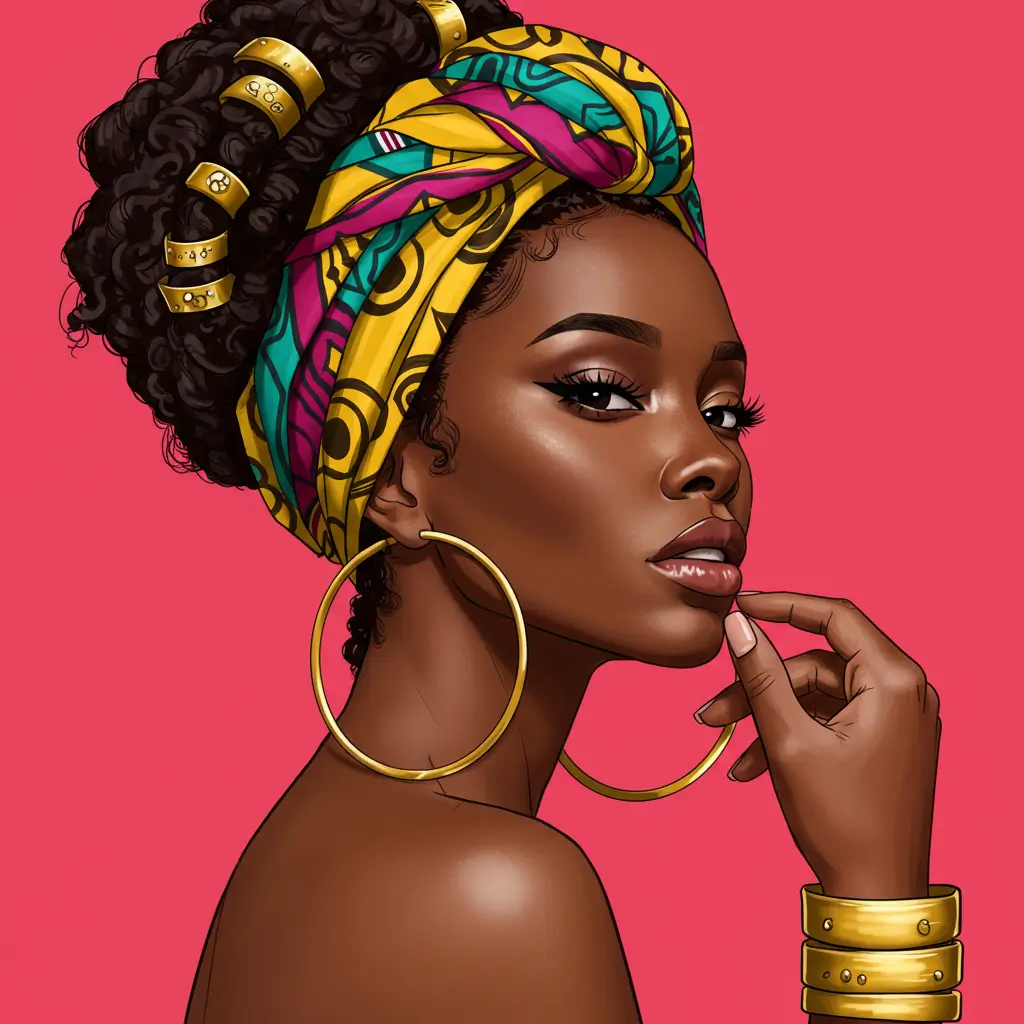
Black hair doesn’t exist in a vacuum. It’s a canvas for beads, scarves, headwraps, cuffs, barrettes you name it. These elements shine especially in wedding hairstyles for African hair or detailed kids hairstyles with beads, where hair becomes an extension of fashion and culture.
- Beads
- Scarves
- Headwraps
- Cuffs
- Barrettes
These aren’t optional add-ons they’re part of the look.
Want bonus realism?
- Beads often weigh the hair down slightly, so show that tension.
- Headwraps should follow the contour of the hair underneath.
- Add some shine lines on metal cuffs or beads to give depth.
Common Mistakes Artists Make (Don’t Be That Person )
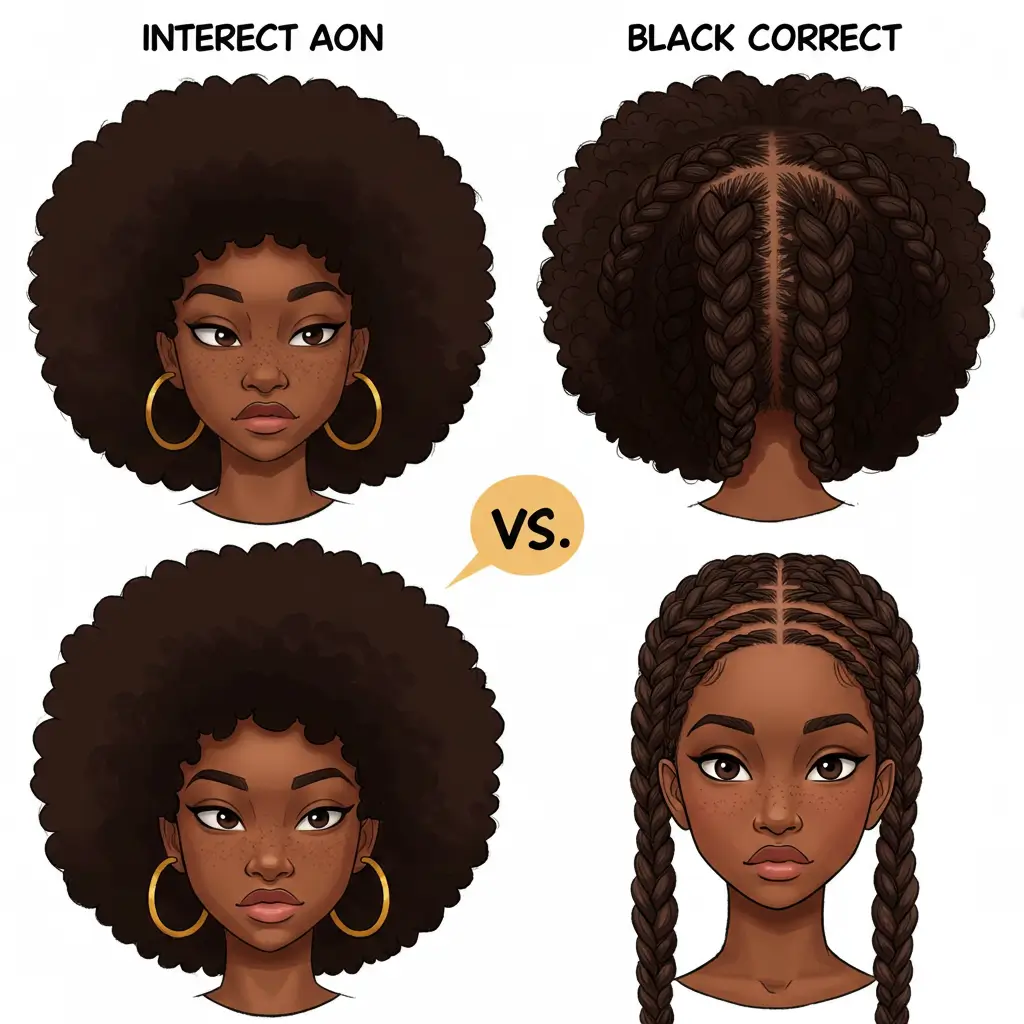
You know we have to talk about this. Drawing Black hairstyles respectfully means avoiding some awkward and lazy choices.
Let’s call it out:
- Afros as perfect circles (Unless you’re drawing a 70s cartoon. Still risky.)
- No texture on braids (They’re not just tubes!)
- Same hairline for every character (Texture changes everything—even the edges.)
- Missing part lines or scalp sections (These details matter.)
FYI: Little things like clean part lines or realistic baby hairs can make your art go from “meh” to masterpiece.
Practice Makes Progress (Not Perfection—Art’s Not That Rigid)

Drawing Black hairstyles takes practice because you’re not just learning a shape you’re learning texture, structure, and culture. Look to real-world examples like hairstyles for African kids or even elegant wedding hairstyles black women for inspiration, and keep challenging yourself to observe more deeply with every sketch.
Tips to level up fast:
- Study photo references—not just of the hair, but the hair in motion.
- Watch real-life tutorials on braiding, twisting, and styling. Understanding the process = better drawing.
- Draw from different angles. A cornrow from the front is very different from a side view.
- Follow Black artists. Support their work, learn from them, and stay inspired.
Final Thoughts: Draw With Respect, Detail, and Some Swagger
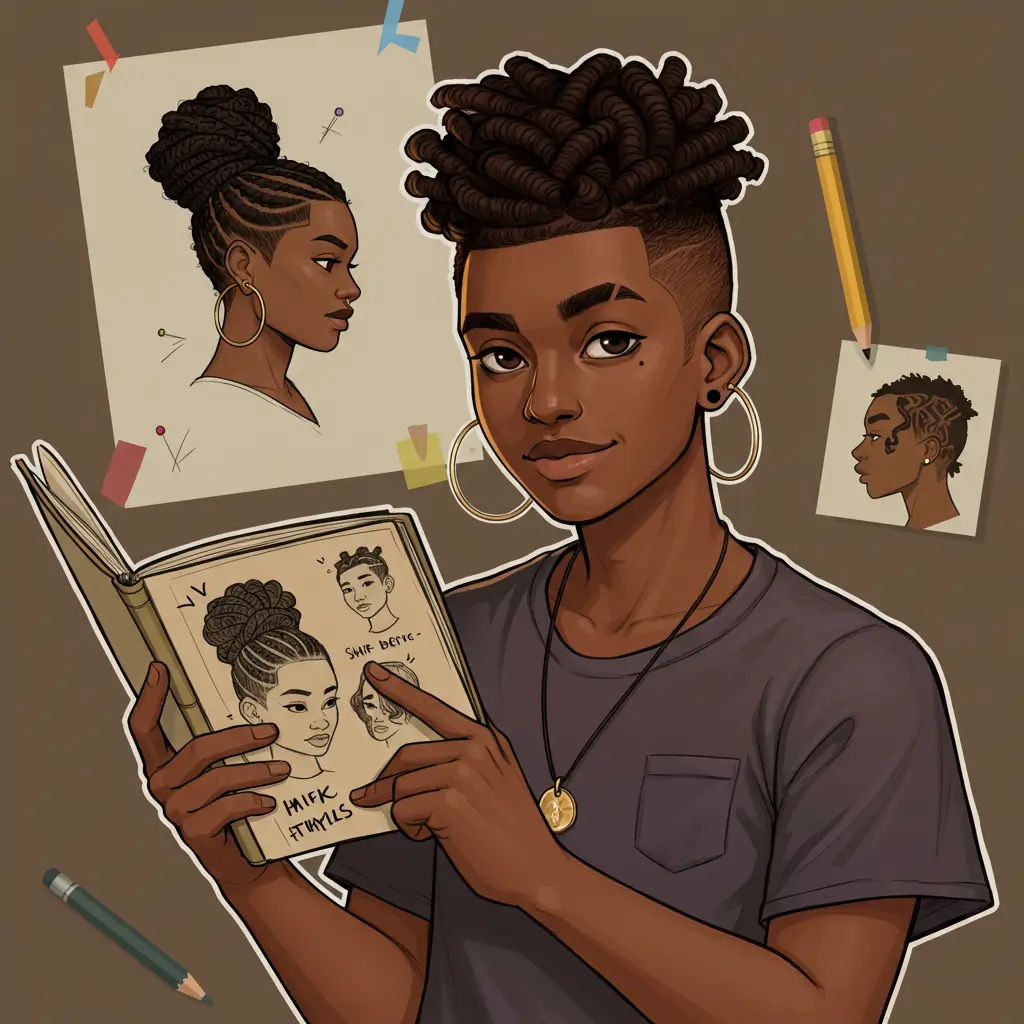
So, what’s the big secret to drawing Black hairstyles?
Respect. Observation. Texture. And yeah, some trial and error. These styles are full of life, movement, and history—you can’t treat them like background filler.
Whether you’re drawing a futuristic queen with a crown of locs or a cool dude rocking waves and a fade, the key is to stay curious and thoughtful.
Now grab your pen (or stylus) and get sketching. You got this!
And hey if your first afro still looks like a mushroom cloud, don’t sweat it. Been there. Keep going. Keep learning. And keep drawing with love.


